Disclosure: This post contains affiliate links that I may earn a small commission from if you purchase something through them. This comes at no extra cost to you!
Chiang Mai is a super relaxed city nestled among the gorgeous mountains of northern Thailand, some 700km north of Bangkok.
It is a cultural masterpiece and was once the capital of the Lanna Kingdom, with the iconic red walls, moats and four gates still surrounding the Old City today.
Known for it’s quaint coffee shops, lush rainforests, 300+ temples, elephant sanctuaries, unique hill tribes, enormous markets, and extensive cuisine, Chiang Mai has plenty to offer any tempted voyagers. Pair that with affordable living costs and slow pace of life, it’s no wonder why so many digital nomads all this city home too!
The “Mai pen rai” attitude is contagious, the easy-going way of life sucks you in, the lack of high rise buildings is aesthetically soothing, the picturesque moat and red city walls provide so much character… I could go on forever here. The point is, this city is special and you’d be mad to miss it off your Thailand itinerary!
Chiang Mai is easily one of my favourite Southeast Asian cities – and I’ve been to lots! I first came here in 2016 and the place stole my heart. In 2022 I returned for around 3 months while completing a TEFL course before travelling around the region.
Having done some extensive travelling in the area, I’ve created this travel guide for like-minded people who are planning to visit this unique city one day, including helpful links to Google Maps locations and any tips I’ve picked up along the way!
Table of Contents...
Toggle
Useful information for Chiang Mai
- Country: Thailand
- Language: Thai
- Population: 130,000
- Currency: Thai baht: £1/$1 = 42/37 THB
- Visa info: As of October 1st 2022, many countries can enter Thailand for free with a 45 day visa on arrival. If your country isn’t included you can apply for a 30 or 60 day tourist visa before arriving. After that you can extend for an additional 30 days at immigration in Chiang Mai or Bangkok for around $40. You can onlt do this once before having to physically leave the country.
- SIM cards: There are a few SIM card options that are good in northern Thailand, but the best is DTAC. They have solid reception even in remote areas and offer a great package of unlimited internet at a fast speed of 15mbps for only 200THB (£4.70) per month. It can be topped up at any 7/11 store.
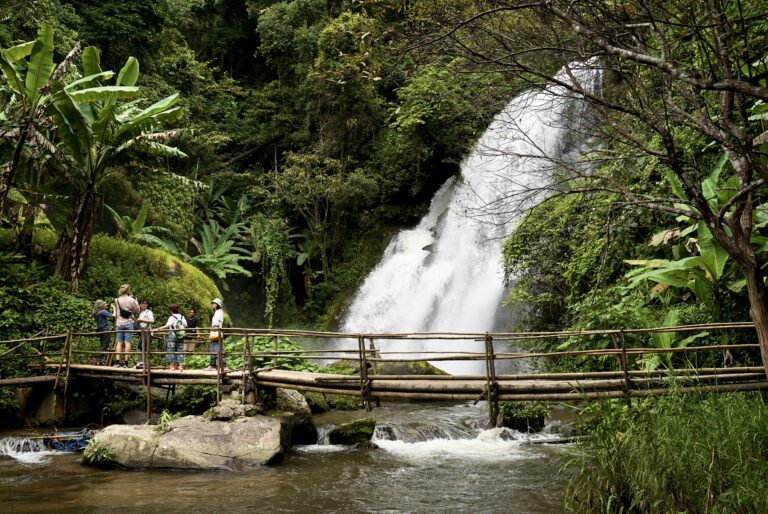
Where is it
Chiang Mai is located in the north of Thailand, about 700km north of Thailand’s capital of Bangkok.
Check it out on the interactive map below.
How to get to Chiang Mai
- Flight: Chiang Mai is the largest city in northern Thailand and the airport is relatively-well connected. Most flights into Thailand will be to Bangkok, but there are sometimes flights from nearby countries direct to Chiang Mai too. This is definitely the most expensive way to travel, but also the most convenient. For example, I took a domestic flight in 2022 from Phuket to Chiang Mai for around $70 to avoid a whopping 24 hour train or bus journey.
- Overnight buses: Another popular option is to take an overnights or day bus. These are affordable and, although they take a long time, normally pretty comfortable. Most overnight buses have beds and curtains and are a unique experience. A journey from Bangkok will take 10-12 hours and cost around 650 THB which you can book online with 12Go. Book your bus on their website here.
- Trains: Thailand has a decent railway system across the country and journeys are ridiculously cheap. A typical journey from Bangkok to CM will take 12-14 hours and cost around 100 THB for a seat. I took a 3 hour train from Chiang Mai to Lampang (a city just 100km away by road) and the journey cost just 25 THB (about $0.70). It’s a slow way to travel between cities, but incredibly scenic, stress-free and super cheap!
When to go
This depends on whether you like it wetter and quieter, or hotter but busier.
- Wet season: May – Oct
- Cool season: Nov – Feb (Peak season)
- Hot season: March – May
Sure, it rains in Chiang Mai in the wet season, but it isn’t actually that bad. When it rains it really comes down hard, but it isn’t constant every single day.
The vibrant greens of the countryside, the flowing waterfalls and the lack of tourists make the wet season my favourite time to visit, but “when’s best” is highly subjective.
How to get around
There are a few different methods of transport in Chiang Mai.
To go further afield, you have 5 main options, aside from walking:
- Motorbike: If you’re experienced and plan on doing a lot of exploring, this will work out as the cheapest option. If you’ve driven a bike before, this is not the place to learn. There are lots of cars and lots of accidents as Chiang Mai is a pretty busy city with lots of cars. Scooters cost around 150-250 THB per day depending on the engine size and are available all over the city. Filling up a bike in Thailand costs 100-200 THB depending on the tank size.
- Grab: A Grab (Asia’s version of Uber) ride across the whole city can cost as little as 60 THB. To use Grab all you need is a local phone number and internet. There are many drivers in Chiang Mai so you’ll never be waiting for too long, and you can choose between motorbike or car rides. With Grab you can pay by card in the App too, so you never have to fiddle around with cash.
- Tuktuk: Tuktuks are normally cheaper than Grab, but make sure to negotiate a price beforehand. They are constantly available around the city and are not very pushy, which is quite refreshing compared to some other cities.
Songthaew: A songthaew (or “red car”) is a larger vehicle, usually a truck, used as a shared taxi across the city. At 20-40 THB per ride, these are one of the cheapest ways to get around for short journeys.
Tours: Another way of getting around if you’re pushed for time but want to see the sights efficiently is by taking a day tour. These are the best companies for day trips:
Where to stay in Chiang Mai
The Old City is where it’s all happening in Chiang Mai, so you’ll want to be around there.
In my opinion, the best areas are either by the Tha Phae Gate (east gate) or North Gate. They’re a mixture of lively and chilled, with all the best parts of the city just a short walk away. The Sunday Night market starts at Tha Phae Gate, there are many great food and drink options nearby and lots of great accommodation choices.
Across Chiang Mai dorm rooms can be found for as little as $3, or private double rooms for around $10. I’ve stayed at many different places in the city like the Premier Hostel Chiang Mai, OYO Midtown Battery, Kamala Boutique Guesthouse and Kayan Hostel.
For a backpacker, I really recommend Premier Hostel at the North Gate. It’s a huge, modern hostel with better-than-average beds and facilities… plus it’s only $4 a night!
- Use Booking.com or Hostelworld to find somewhere suitable!
Expected costs
Accommodation, food, transport and activities are very affordable in Chiang Mai.
Depending on your travel style, a comfortable daily budget could range from 750 – 1400THB, but it largely depends on your preference of certain things like Thai food vs western food, a private room vs a dorm, Grab vs renting your own bike, and so on.
Personally, as a budget backpacker who eats cheap local food and rides a bike, my daily budget is much less than 1000 THB, even with private accommodation most of the time.
What & where to eat
Affordable and tasty food is something Chiang Mai does very well.
Iconic Thai dishes like Pad Thai or Khao Soi usually cost as little as 50-70 THB in a restaurant but are even cheaper if bought from a street vendor.
Western food is readily available city-wide too, but personally I stick to local places as much as possible due to the price. Expect to pay a lot more for western food, for example a pizza can cost around 250 THB and a pasta dish will be around 200 THB.
Beer lovers can pick up a large bottle of Chang or Singha at a restaurant for around 80 THB. Cocktails are usually between 120-160THB depending where you are and soft drinks at a restaurant range from 15-20THB.
A few of my personal favourite local places to eat are the North Gate Market, It’s Good Kitchen, Kat’s Kitchen and Grazie. An honourable mention goes to the food court in Central Festival Mall, where prices are extremely cheap and there’s a large range of cuisines.
How long to stay
This depends on your intentions.
Many people come to Chiang Mai and never leave! I spent 3 months here in 2022 and I’m still constantly adding to my list of things to see and do.
However, for a backpacker who’s travelling around Thailand and only has a set amount of time to visit Chiang Mai, I would recommend about 4-7 days to see the city properly and the surrounding national parks.
Thinking of visiting Southeast Asia soon? Don’t miss these essential guides to help planning your trip:
The best things to do in Chiang Mai
1. Go temple chasing
Chiang Mai is home to over 300 Buddhist temples, the best of which are located in the Old City.
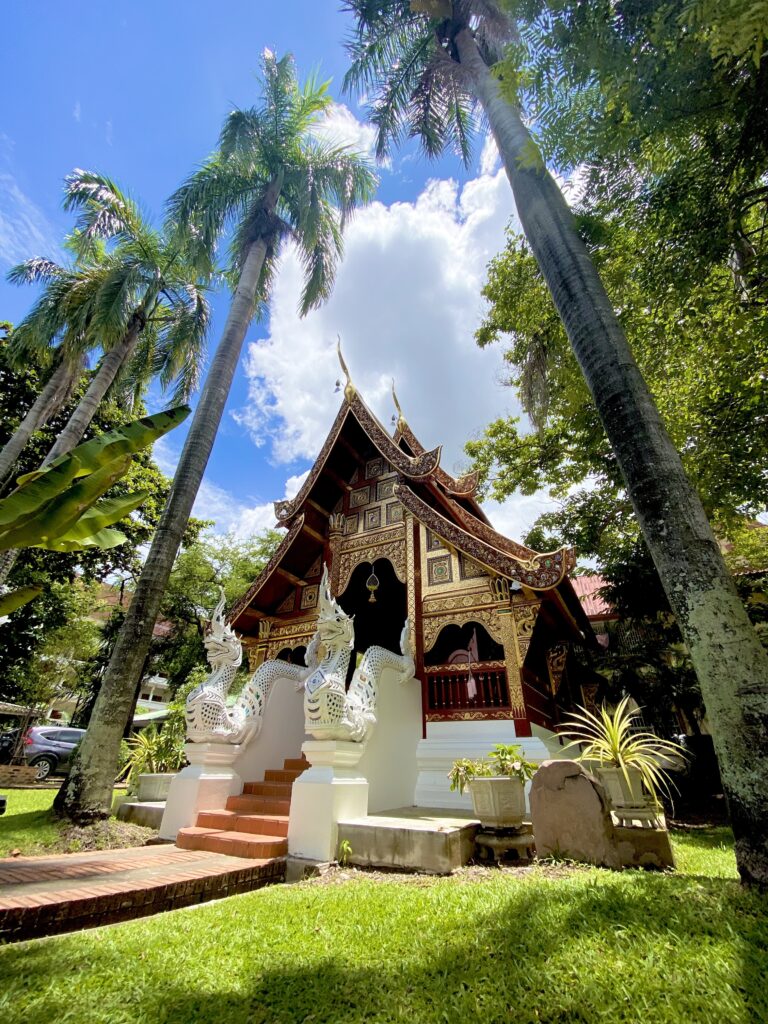
Being the ancient capital of the Lanna Kingdom, it’s no wonder why there are some many temples found here.
It’s important to learn a little bit about Chiang Mai and Thailand’s culture when you visit, so make sure to admire the great architecture, golden stupas and giant Buddhas of some of the city’s best temples.
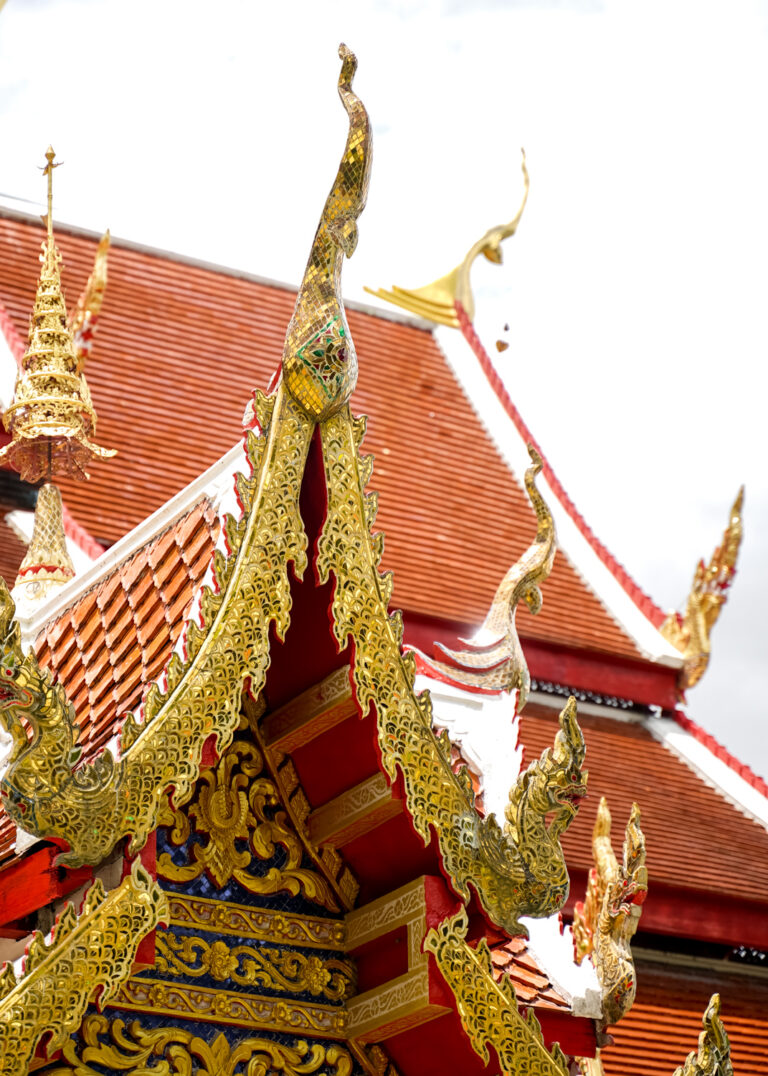
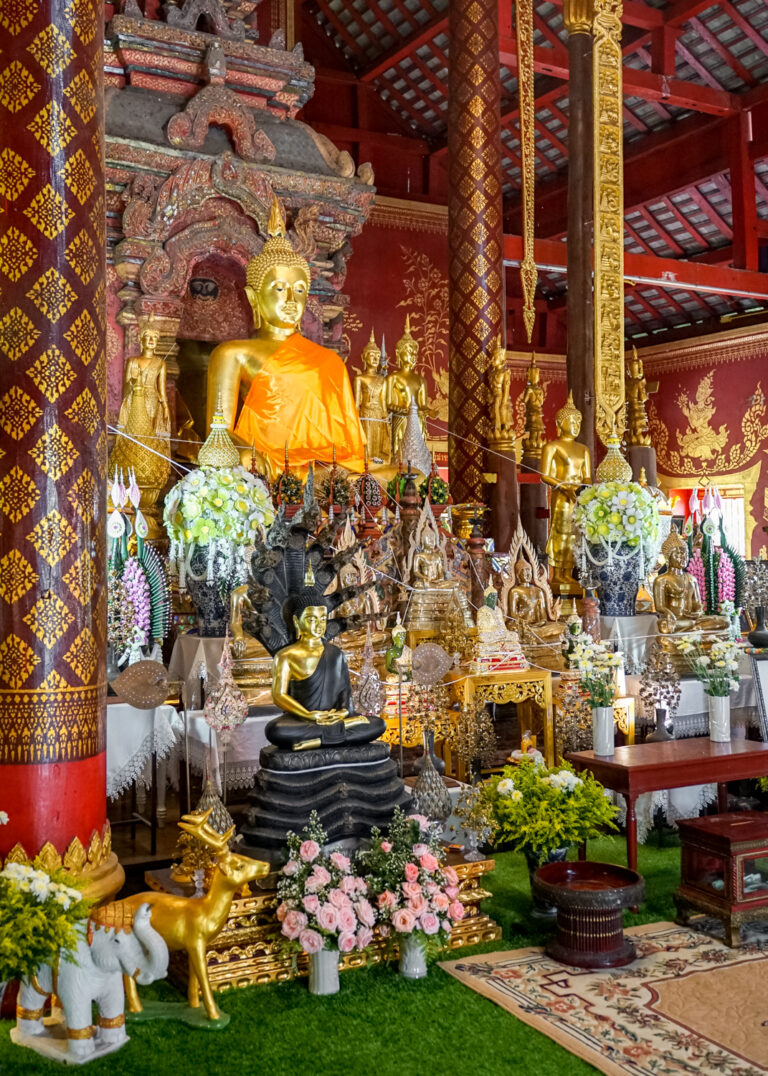
I have visited lots of Chiang Mai’s temples and to save you getting “templed out”, I have shortlisted the most impressive four in the Old City.
Make sure to wear appropriate clothing and be respectful when visiting any religious site in Thailand; shoulders covered, no short shorts and take off your shoes to go inside.
- Wat Phra Singh
This large Lanna temple complex in the west of the Old City is Chiang Mai’s most visited temple. There are lots of great photo opportunities here and many nooks and crannies to explore.
- Wat Chedi Luang
To me, this is the most “wow” temple in Chiang Mai. An earthquake in 1545 destroyed it’s upper half, but it is still mightily impressive and dominates the area. Wat Chedi Luang is located right in the centre of the Old City and, as always, is extra awesome at sunset/sunrise!
- Wat Sri Suphan
Chiang Mai’s epic Silver Temple. Even if you think that you’ve seen plenty of temples already, this one is worth the visit as it is the only one of its kind in Thailand.
- Wat Phrathat Doi Suthep
The magnificent and famous temple overlooking the city from Doi Suthep Mountain. Keep reading for more information on this one!
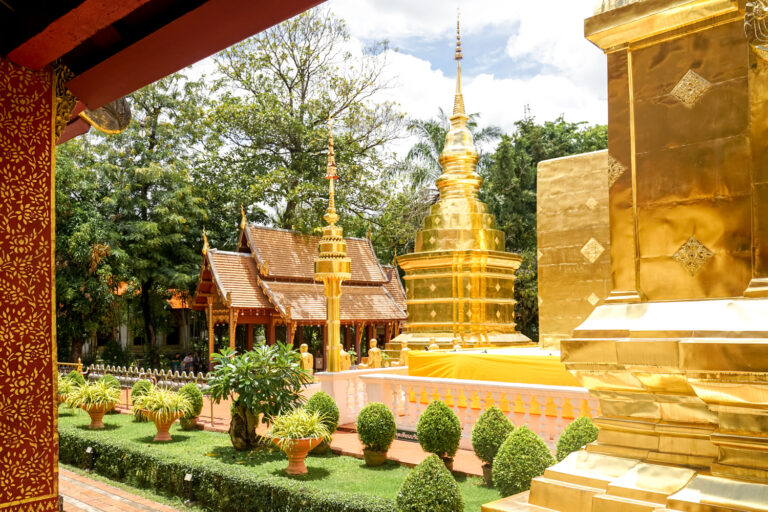
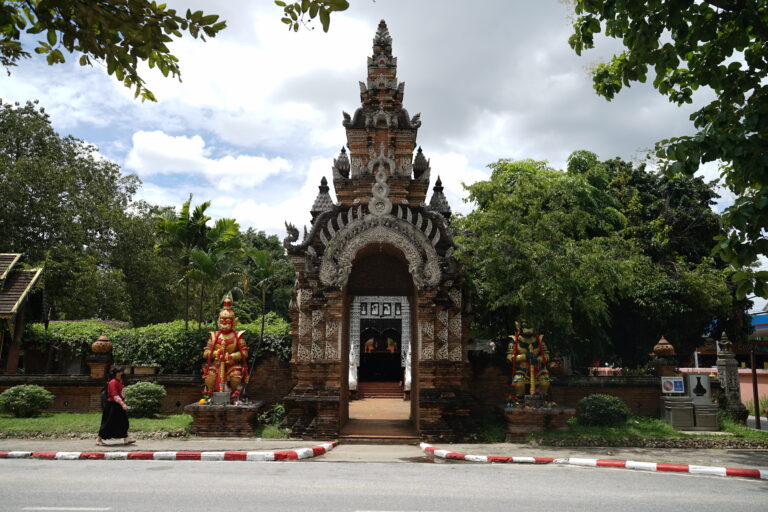
2. Visit Doi Suthep Mountain
Doi Suthep is a stunning mountain overlooking Chiang Mai that has the perfect route for a 50km half-day motorbike road trip.
The epic winding road has plenty of viewpoints that get better and better the higher you climb, including multiple iconic stops.
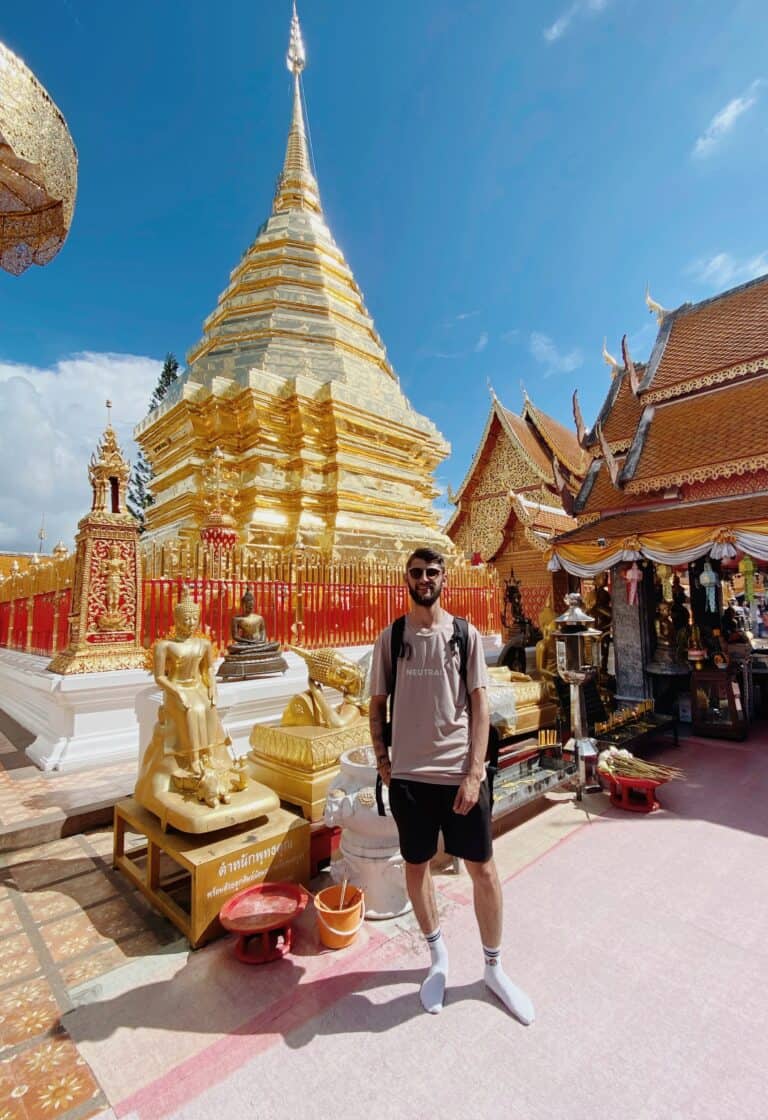
Renting a motorbike and self-driving makes this adventure all the more amazing, but there are also songthaews (red trucks) in Chiang Mai that will take you directly to Doi Suthep if you’d rather not drive.
There are 3 main stops on my suggested mini road trip;
- Wat Pha Lat
- Wat Phrathat Doi Suthep (the highlight of the mountain)
- Doi Pui viewpoint/Hmong village
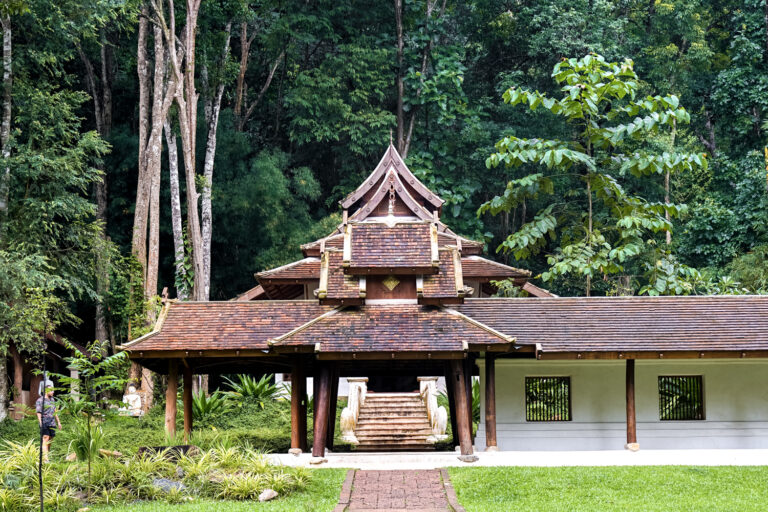
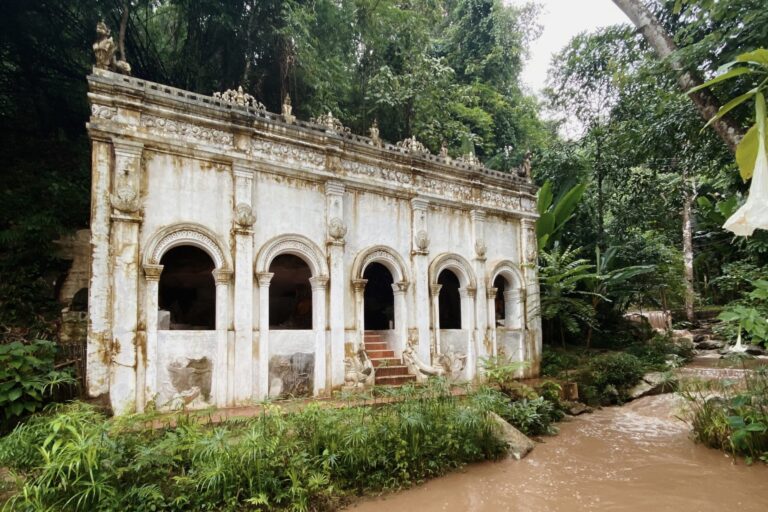
From Wat Pha Lat, continue along up the road for 6km and you’ll reach Wat Phrathat Doi Suthep, the highlight of Doi Suthep mountain, which overlooks the entire city and region.
This temple is one of Chiang Mai’s most famous landmarks and is normally pretty busy, but it’s large enough that it rarely feels too crowded.
You really can’t come to the city and not pay a visit up here. Climb the large set of steps, pay the 50THB entrance fee and explore the temple at your own pace.
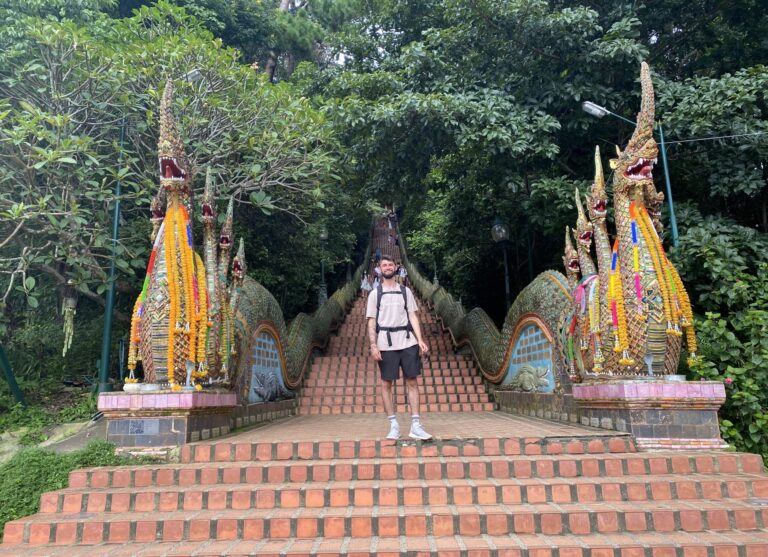
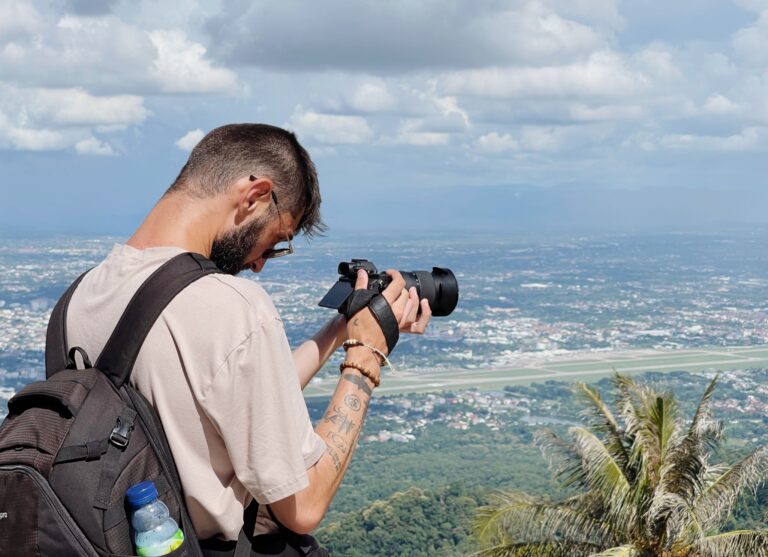
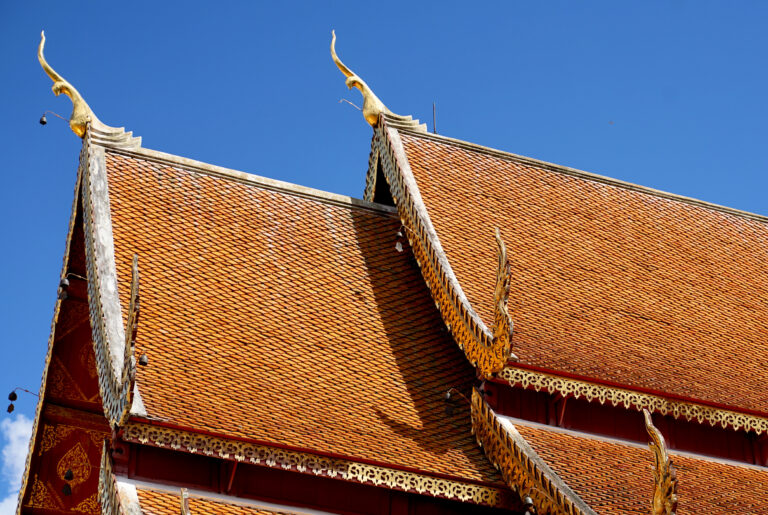
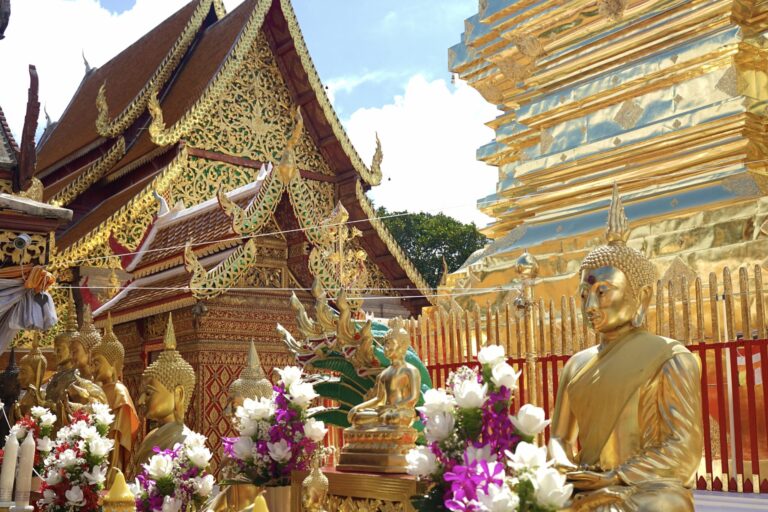
Finally, continue for another 8km to reach Doi Pui viewpoint which overlooks a landscape of rolling mountains and Ban Doi Pui Hmong Village.
With extra time you could make a visit down to the village to see the way of life of the Hmong Tribal people that live there, but I haven’t actually been down yet so can’t recommend it.
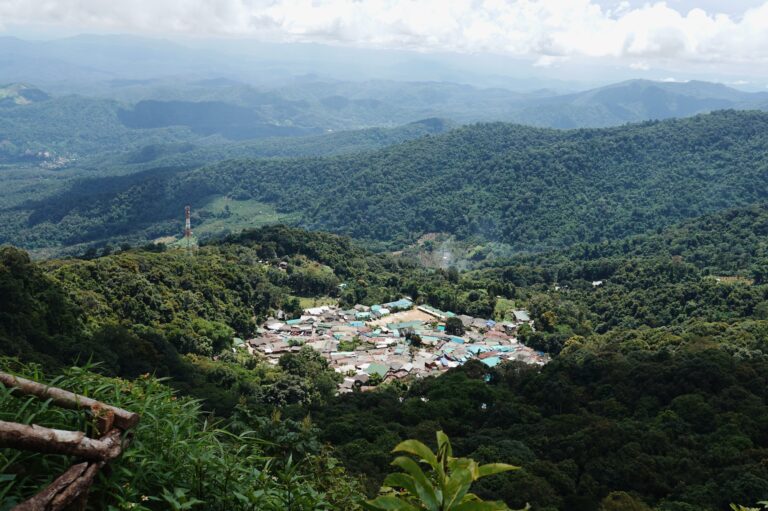
3. Visit an elephant sanctuary
Prices for a morning or afternoon visit to an elephant sanctuary are normally around 1500 THB, including pick-up and drop-off from Chiang Mai. Overnight stays can be upwards of 4500 THB.
Check out these experiences on Get Your Guide.
4. Chiang Mai Sunday Night Market
Chiang Mai is well-renowned for it’s amazing markets, most notable of which is the Sunday Night Market which stretches nearly 1km from the Tha Phae Gate to Wat Phra Singh along Ratchadamnoen Road.
On Sunday evenings, from around 5pm to midnight, the busy street transforms into a pedestrianised market offering great deals on everything from street food to handicrafts and clothes.
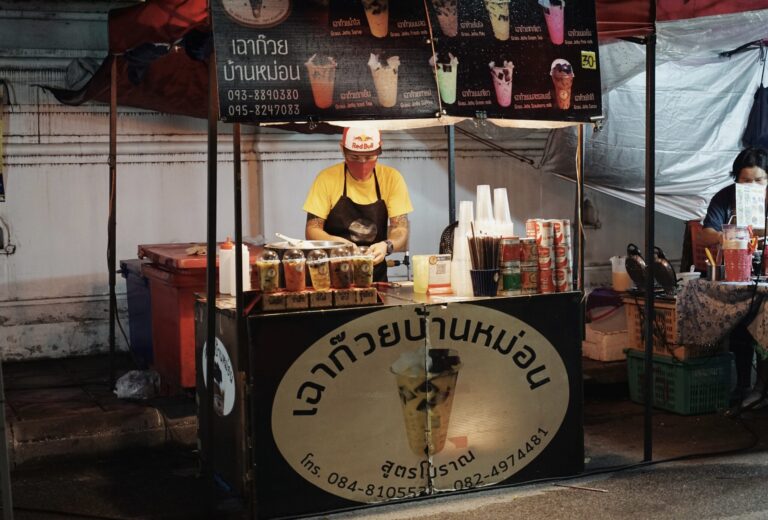
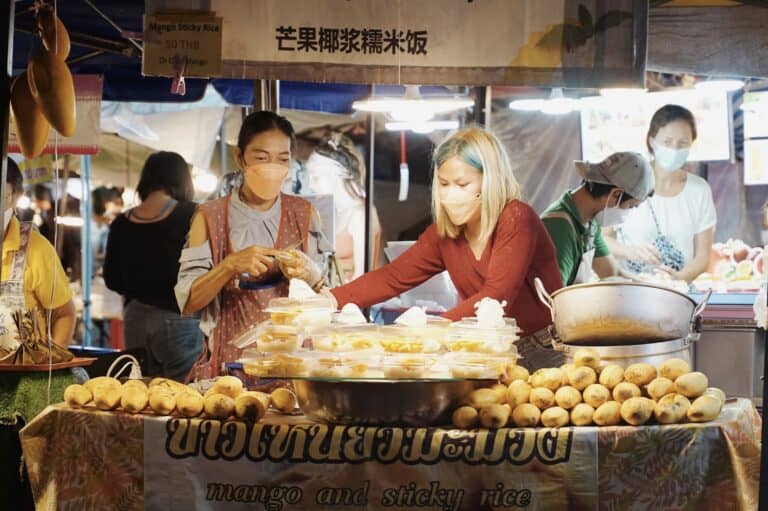
The Sunday Walking Street Market draws in a massive audience every week and is likely one of the busiest markets in the whole of Thailand. The 1km stretch of road is packed around 8pm when locals and tourists descend for cheap dinner and good bargains.
Be sure to explore the side streets as well, because this market has many arms and legs!
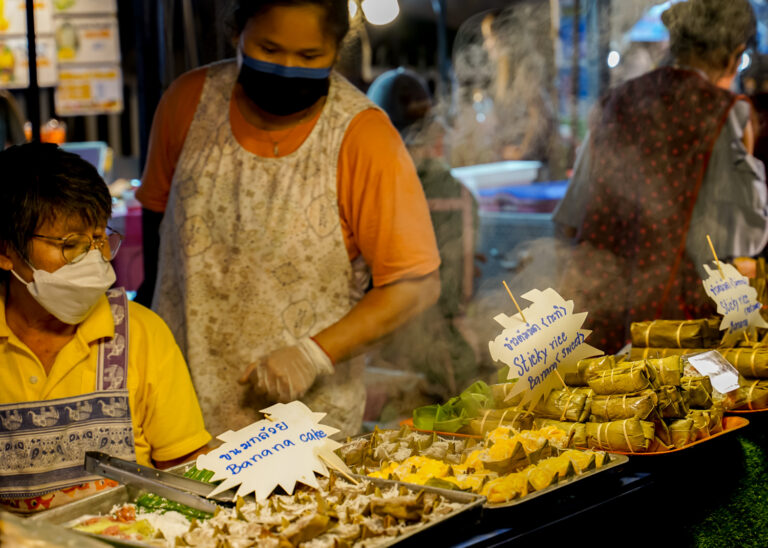
Other good markets to consider are:
- The famous Night Bazaar
- Anusarn
- Warorot
Anusarn and Warorot are daily markets just outside the Old City walls offering similar things. Warorot market is renowned for it’s great food in particular.
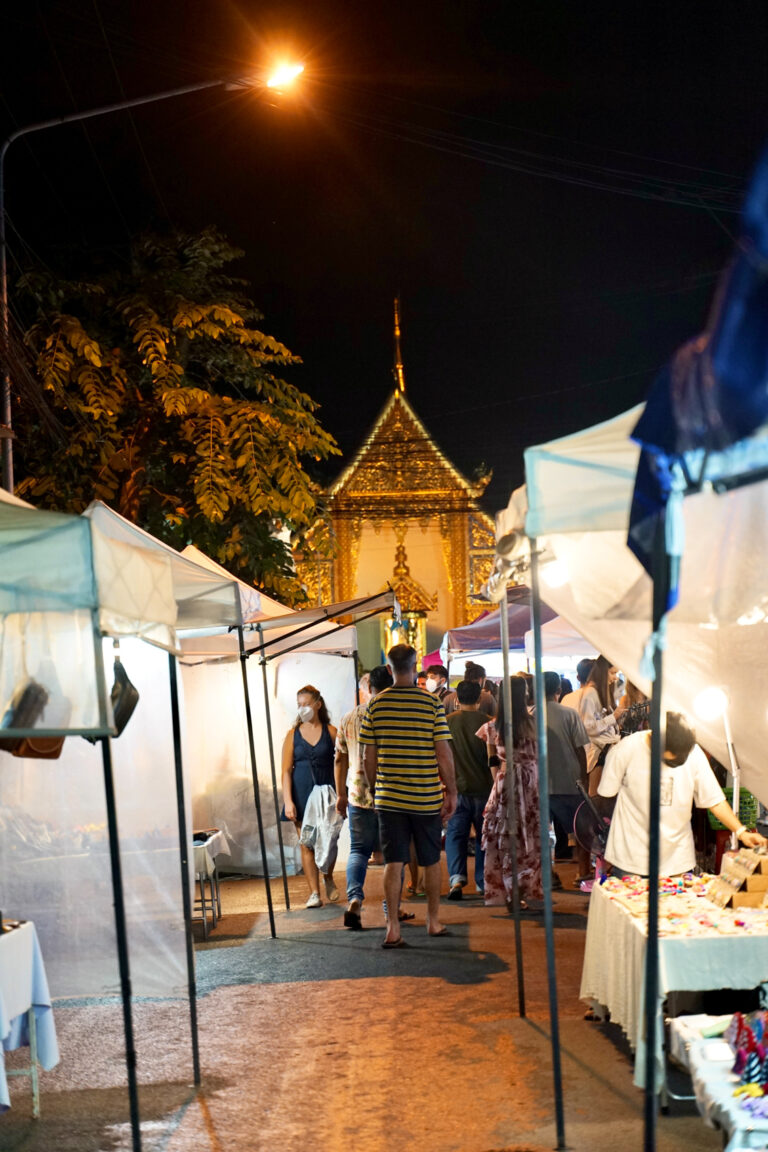
5. Cafes, coffee shops & working spaces
Chiang Mai is also known for it’s digital nomad scene, which pairs itself nicely with it’s cafe scene.
With affordable and delicious coffee options, there are hundreds of quaint cafes dotted all over the city, each providing a unique vibe and the perfect office space. These spaces attract many people from the thriving digital nomad community in the city as they are perfect places to work and network. I mean, fast WIFI and coffee on tap… it’s kind of a no-brainer!
As a price example, you can expect an iced caramel latte (my personal go-to) to cost around 60-80 THB (£1.50/$2) across the city.
A few of my personal favourite spots are:
- Stories Cafe
- Yellow Pug Cafe
- Brewginning
- Thor Phan

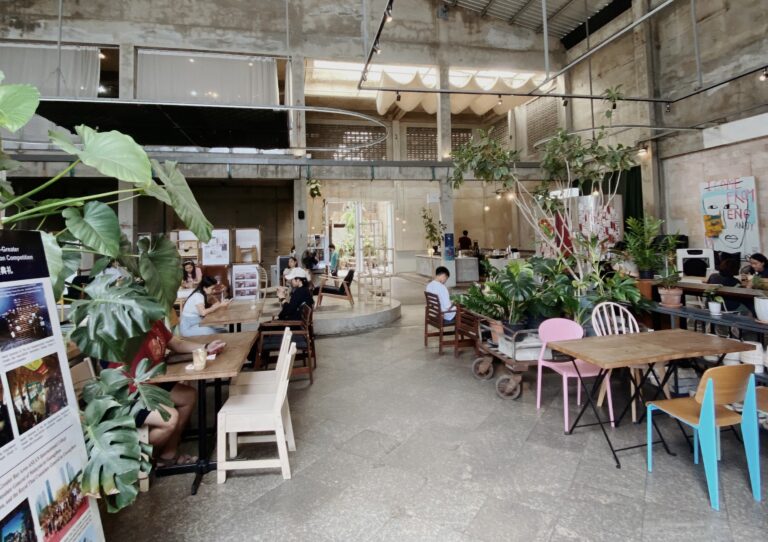
6. Go to Pai
Pai is a magical little town located 3 hours north of Chiang Mai. It has loads to offer all types of traveller, whether you’re a nature-loving adventurous soul or a party animal who prefers to drink all day… or both of those things at the same time – Pai’s got you covered!
Minibuses to Pai from anywhere in Chiang Mai cost just 150-200 THB, and I fully recommend at least spending a couple days there if you have time. I visited Pai for 4 days and absolutely loved my time there.
- Pai canyon
- Pembok waterfall
- The bamboo bridge trail
- Mo Paeng waterfall
- White Buddha
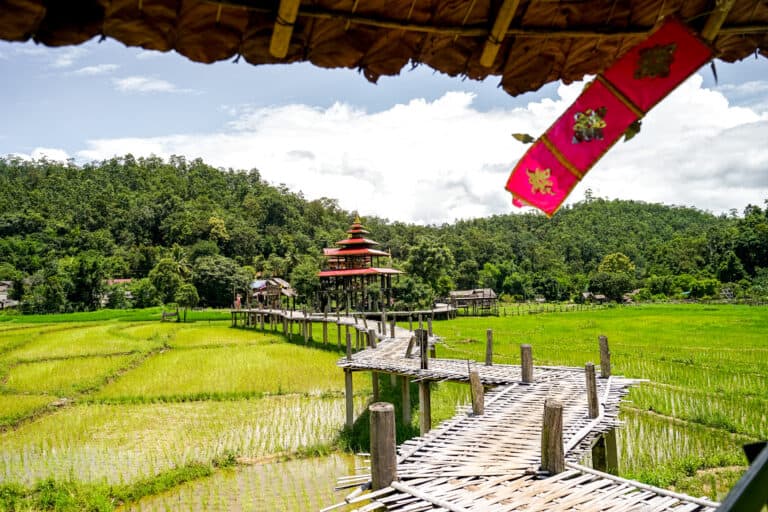
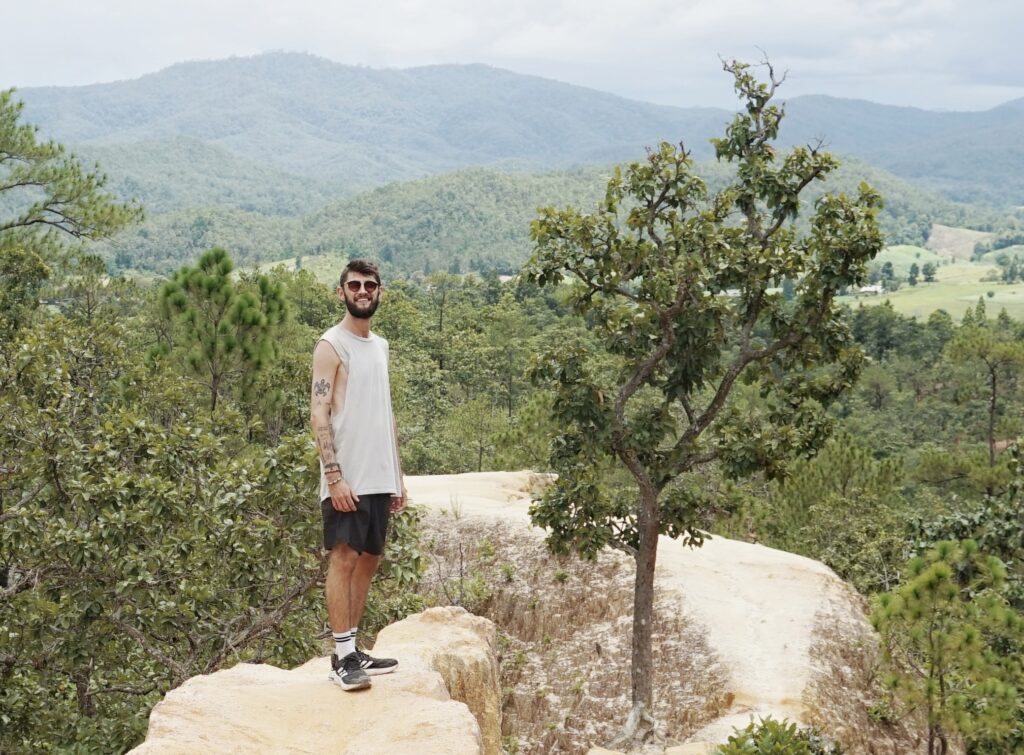
7. Take a cooking class
Chiang Mai is the most popular location in Thailand to take a cooking class, which I did in 2016.
I’ll never forget the amazing/crazy/hilarious guy called “Sexy A” who ran our course rating our spring rolls from 0 (ugly babies) to 10 (sexy babies). Oh, Thailand… you special place.
Most classes start by going to a market to pick up some fresh produce and learn about the ingredients you’re going to use in some classic Thai dishes like Pad Thai. Head back to the kitchen to cook up a storm and make sure to bring an appetite because at the end you’ll get to eat all that you’ve made. They may throw in a free recipe book if you’re lucky too.
Prices range from 1000 – 1300 THB.
8. Day trip to Doi Inthanon National Park
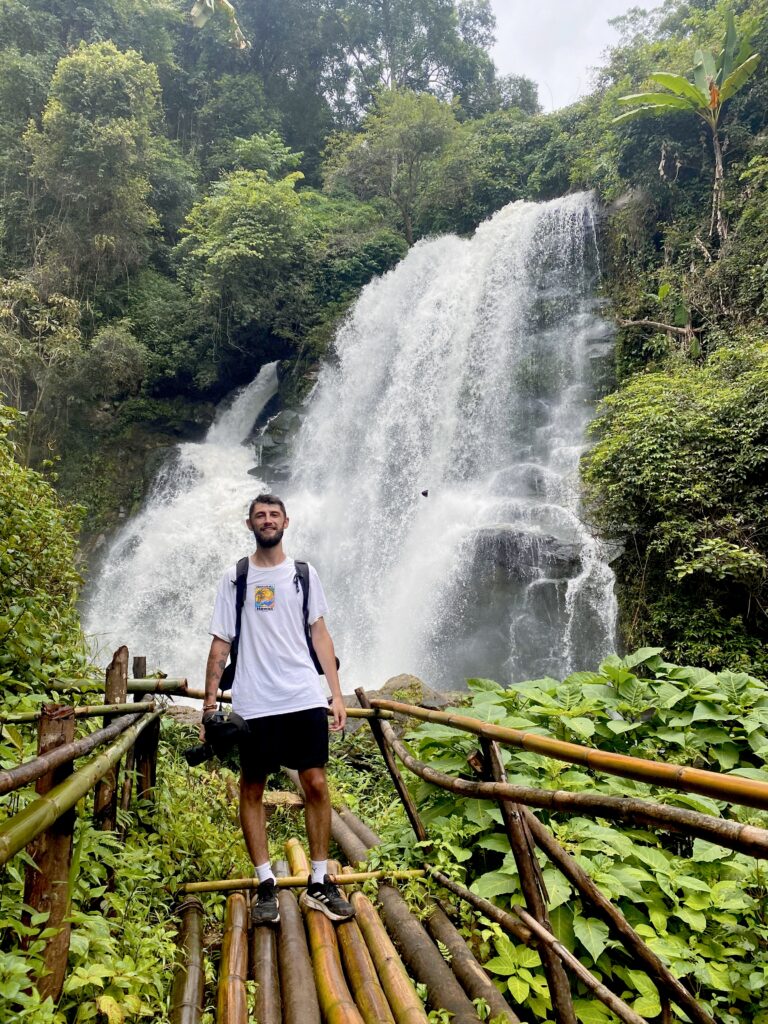
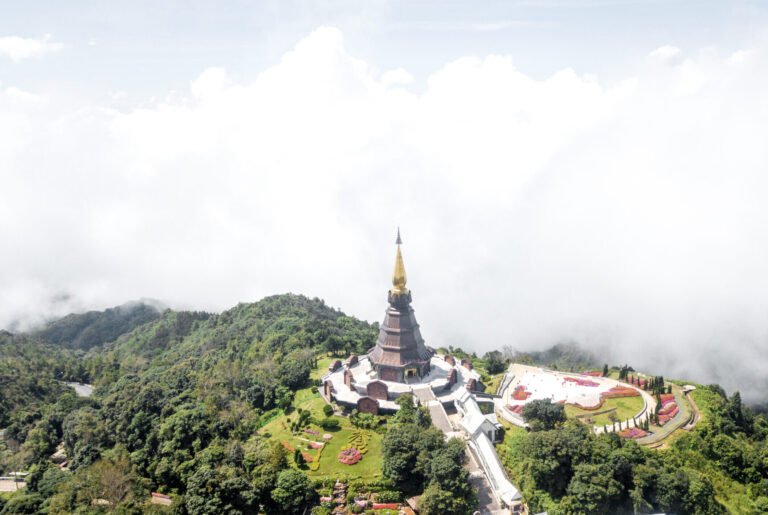
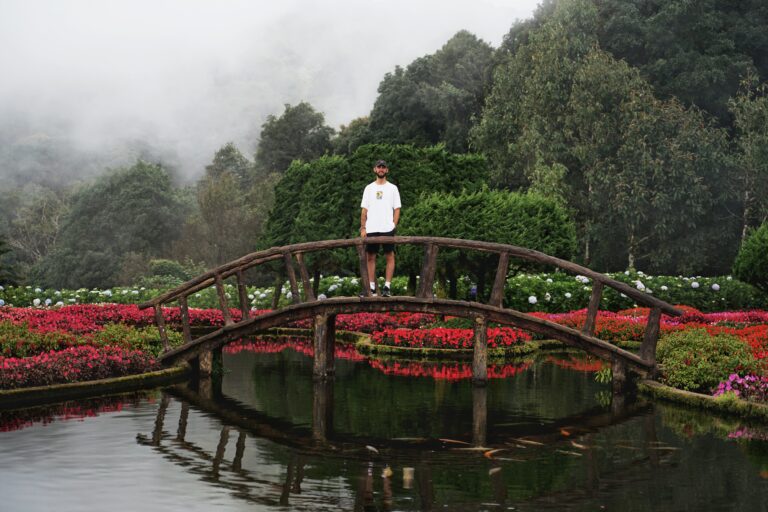
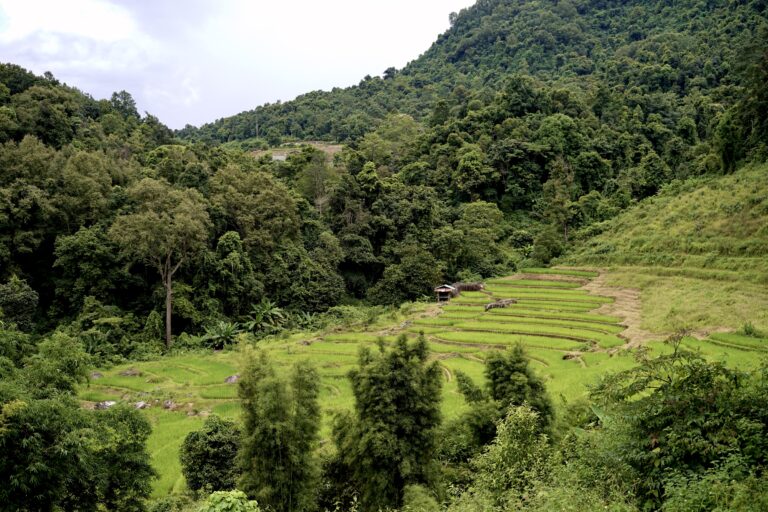
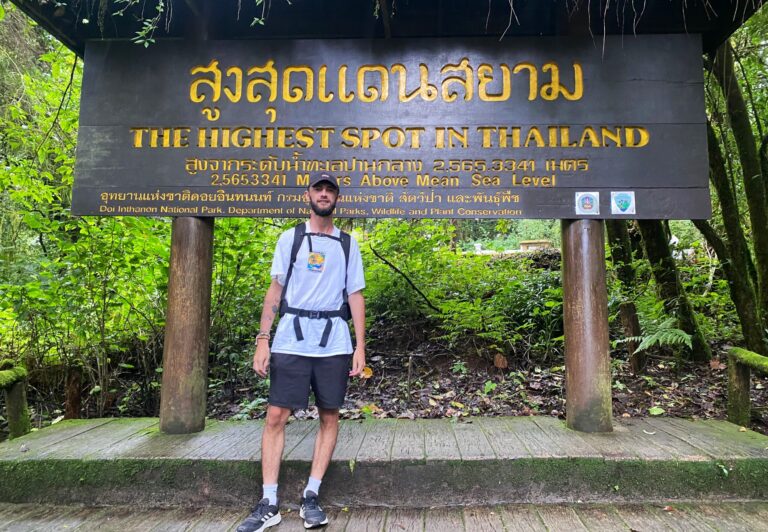

My experiences in Chiang Mai
I first travelled here in 2016 during a 1 month trip to Thailand, which kicked off my first ever journey across the world for 14 months. Those were the days when I was just getting into photography and journaling, so I sadly don’t have much to show from that trip, like the elephant camp and cooking course. What I do remember is that Chiang Mai stole my heart.
In 2022 I finally returned stayed in Chiang Mai for about 3 months while completing a TEFL qualification and sightseeing extensively and trying to find a teaching job. Flying in from Phuket in the south, I immediately remembered why I missed the north: the chill vibes. That’s not a dig at Phuket, because I also love it down there, but I wouldn’t exactly describe Patong as relaxed!
I just love how easy everything is here. Want a bike? Here you go. Want dinner? There it is. Need a Grab? Boom, here’s one.
There is just such a unique atmosphere in Chiang Mai that you don’t get further south. Maybe there’s something in the mountain air. My kind of people.
How much did I spend?
This is hard to gauge based on my circumstances, but for the duration of my TEFL course (1 month) I spent $257 on accommodation (private hotel room with air-con and small balcony) and $98 on renting a bike for 31 days.
I spent about 12,500 THB ($340) on all other expenses (dinner, laundry, drinks, 7/11, petrol, entry fees etc) across that month. Bare in mind I am a budget traveller through and through, and if I had drank less cocktails in my first couple weeks that number would be much, much lower… oops.
So, in my first month of living in Chiang Mai I spent about $600 all in. Not bad, really!
Best tours of Chiang Mai

Thank you for reading this travel guide – I hope you found it helpful! Feel free to leave a comment below if you have any questions and I’ll get back to you as soon as possible
Happy travelling!
HELPFUL RESOURCES FOR PLANNING YOUR TRIP
Accommodation: Booking.com, Hostelworld
Tours: GetYourGuide, Viator, Klook, TripAdvisor
Transport: 12Go, Omio, Trip.com, Rome2Rio
WHO IN THE WORLD IS JAMES?
Click below to learn more about my story, including 5 random facts about me, some travel FAQ’s and my entire travel history.
Related posts:
- The Perfect Doi Inthanon Day Trip Itinerary from Chiang Mai
- Taking a 4 Week TEFL Course in Chiang Mai (Honest Review)
- Phi Phi Islands Day Trip from Phuket (Maya Bay Visitor’s Guide)
- Ultimate Pai Travel Guide & 11 Adventurous Things to Do
- Thailand to Laos Visa Run by Bus (Chiang Khong – Huay Xai Guide)
- 17 Awesome Things to do in Chiang Rai, Thailand – Ultimate Travel Guide


